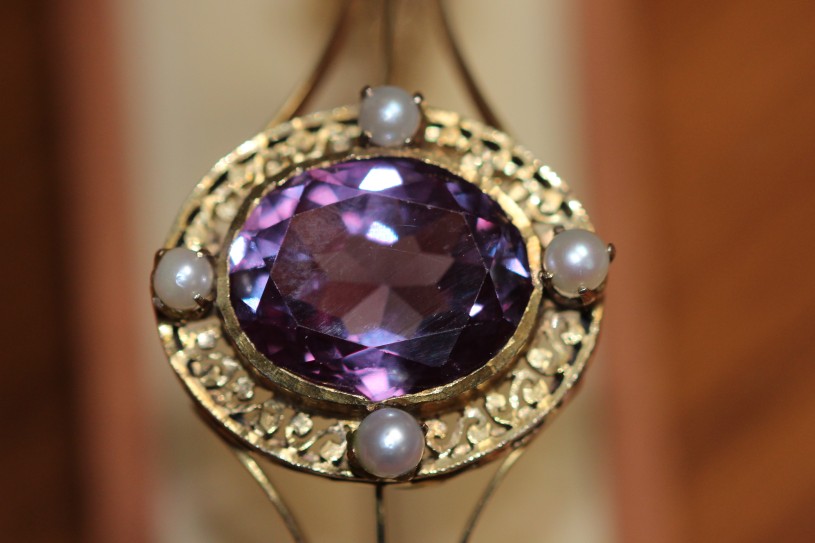In 1912, the National Association of Jewelers (now called Jewelers of America) adopted a list of month birthstones. In that list, the gemstones for June were the pearl and the moonstone. In 1937, the National Association of Goldsmiths of Great Britain adopted a slightly different list of birthstones and in 1952, the Jewelry Industry Council of America adopted this list but added to it. One addition was that the alexandrite was added to the list as a June gemstone.
The alexandrite was discovered in the 19th century in the Urals region in Russia in about 1833. It was found near emerald mines and, as it was green, was thought to be an emerald until it was found to change colour to become a purplish red under candlelight. It was then identified as a new variety of chrystoberyl. Allegedly, the new gem was named ‘alexandrite’ in honour of Alexander, the future Tsar of Russia.
Alexandrite is a lovely colour change stone which is very rare. In the 19th century, due to the limited supply, its use was mainly limited to Russian elite. High end jewellers like Faberge used it and Tiffany’s began to use it at the end of the century. The mine in Russia petered out in about 1890 and it was not until the 1980s that a new source, also limited, was located in Brazil. While a few other sites have now been located, with Sri Lanka being the most prominent, supplies are still small.
Because of the high demand for and limited supply of alexandrite in the late 19th century and early 20th century, it was one of the first gemstones to be imitated when synthetic gemstones were produced. Synthetic rubies were the first, using the Verneuil process, patented by Auguste Verneuil in 1904. By 1908, synthetic spinels had been produced and in 1910, synthetic sapphires. After 1910, a synthetic colour change corundum (that is, the gemstone family of rubies and sapphires) was produced which began to be used as an imitation alexandrite. The colour change occurred because vanadium was introduced into the mix, resulting in a purple gemstone which changed colour to a lovely pink/mauve under different light.

A new process for creating synthetic gemstones, the Czochralski pulled growth method, was patented in 1918, and was mainly used to produce crystals for semi-conductor use. However, it was also found to produce synthetic rubies, sapphires, spinels, garnets and chrysoberyl, including alexandrite. Another synthetic process, called flux-melt process, and introduced in the early 1970s, also produces a synthetic alexandrite. There are a few other processes used to produce synthetics.

So there are synthetic colour change corundums which imitate alexandrites and there are also synthetic alexandrites available, as well as natural alexandrites. The imitation alexandrites have been used in jewellery now for over a century. The stones can be found in antique, Edwardian and art deco jewellery (see the photo of the bracelet below). Many were sold in Mexico and Alexandria in Egypt in the 1950s. Most of these gems are quite large and have no inclusions and shows a characteristic purple-pinky/mauve colour change.

Synthetic alexandrite does have the same physical and chemical properties as natural alexandrite. The Czochralski pulled growth method synthetics are very clean, with no inclusions, and the colour change is more a blue to purple/red. Those produced using the flux-melt process have more inclusions and they show a colour change from green to red, like natural alexandrite, however, they are very expensive to make and production has now ceased.
Both the imitation and synthetic alexandrites are being sold as natural alexandrites in many cases.


Interesting article, there are a few other processes also used to produce synthetics.
LikeLike